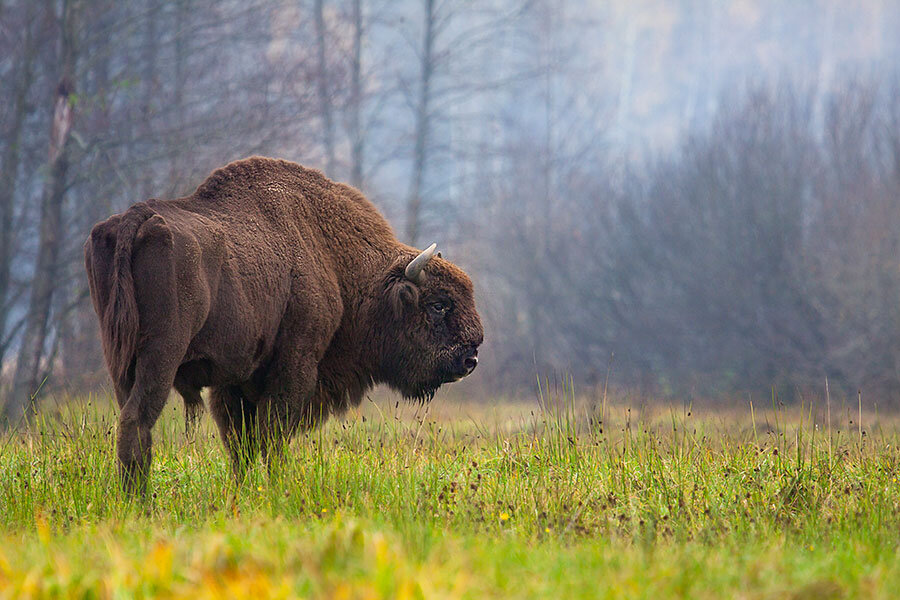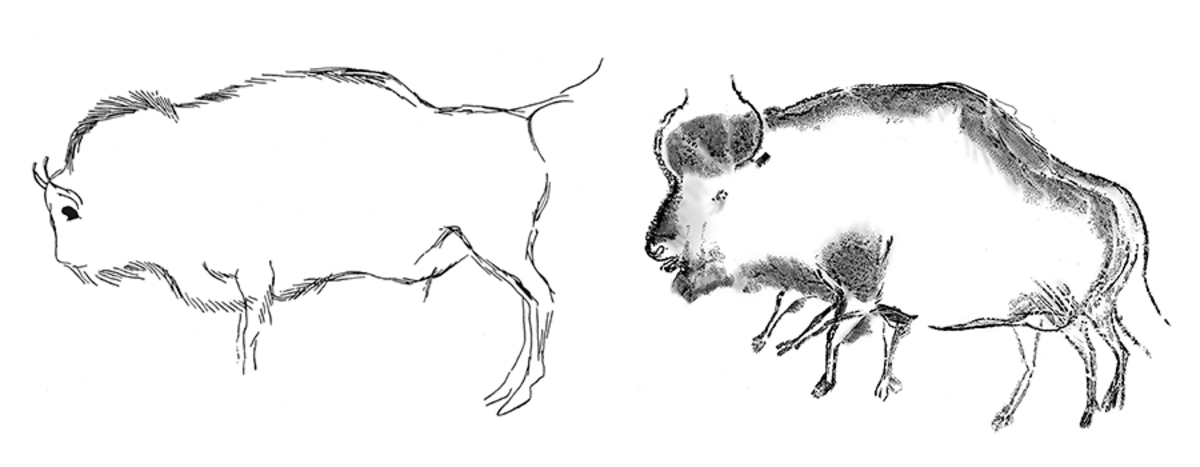Did cave art and ancient DNA solve 'Higgs bison' mystery?
Loading...
What do you get when you cross a cow and a bison? Give it thousands of years and you might just get an entirely new species.
The origin of the European bison has long puzzled scientists. But new research suggests the living bovid actually is the result of two extinct animals, the steppe bison and the aurochs (cattle-ancestors), mating some 120,000 years ago.
This hybridization story "challenges the way we think about how species form," says study senior author Alan Cooper of the Australian Centre for Ancient DNA at the University of Adelaide.
This new conclusion arose out of more than a decade of detective work, chronicled in a paper published Tuesday in the journal Nature Communications.
Dr. Cooper and his colleagues stumbled upon the first clue to the conundrum while using fossil bison bones to measure the impact of climate changes through time.
"When we started extracting DNA from these bones we found a good chunk of them had a very different genetic signal to anything that anyone had ever seen before," Cooper recalls in a phone interview with The Christian Science Monitor. "It looked like a new species, which we thought was quite odd."
The team took to calling the mystery species "bison X" and jokingly dubbed it the "Higgs bison" while they were investigating. (The Higgs boson is a subatomic particle first predicted to exist in the 1960s by Peter Higgs that wasn't actually confirmed until 2013.)
Although the animal's DNA showed that it was a hybrid between aurochs and steppe bison, the scientists didn't know what this animal's life was like, what happened to the hybrid species, or what it even looked like.
But luckily, some witnesses left unmistakable evidence behind: cave drawings of both the hybrid and the steppe bison.
"We contacted French cave art researchers who happily told us that you can see two quite different forms of bison in the cave art," which the experts had never understood, Cooper says. "They'd been put down to regional artistic differences or cultural differences."
But Cooper and his team had the other pieces of the puzzle: bison bones and DNA.
When the team radiocarbon-dated the bison bones, they found that bison X and the steppe bison took turns dominating the European ecosystem – and that the timing matched the cave paintings, which recorded the dominant bison of each era.
This research reveals "how genomic data from ancient species can help to not only understand their origin and evolution, but also our own history," writes David Díez del Molino, a postdoctoral researcher in the palaeogenetics research group at the Swedish Museum of Natural History who was not part of the study, in an email to the Monitor.
"In this article the authors provide evidence that variability in cave art bison depictions, previously attributed to putative cultural and individual variations of style through time, are in reality depictions of very different types of bison," he notes.
Combined, the art, the bones, and the DNA tell a story of two bison species that filled distinct niches. Although bison X was a hybrid of the steppe bison and aurochs, it seems to have thrived in colder conditions. The steppe bison dominated Europe during warmer periods when the region was covered in more lush grasslands.
"This is a very interesting study that points out how the combination of data from multiple sources can help solve problems regarding the origin, adaptation, and extinction of animal species," says Dr. Díez del Molino.
The European bison alive today isn't the same animal as the original hybrid, which may explain why Cooper and his colleagues were initially perplexed by the ancient bison DNA. Years of genetic drift and a 20th-century genetic bottleneck means the modern wisent (European bison) is distinct from its ancestor, bison X.
The bottleneck occurred as a result of a near extinction event. In the 1920s, wisents were winnowed down to just 12 individuals. Conservation efforts helped the animal survive, but such an extremely small population limits the genetic variety of an animal.
It was surprising to find that a hybrid mammal could yield such a successful new species, Cooper says. "If you get hybrid forms, normally what happens is one or the other of the ancestral species kind of absorbs this new thing," he explains. "So it doesn't normally go on, as it has done here, and create a completely new species."
Furthermore, cattle and bison, although they are both bovids, are thought to be quite distinct.
"Hybridization of large mammalian species is not unprecedented (deer, macaques), but it is also known that experimental crossings of bison or with normal cattle are difficult," writes Johannes Lenstra, editor-in-chief of Animal Genetics and a professor at Utrecht University, who was not part of the study, in an email to the Monitor. "So it is surprising that it took place spontaneously in the wild."









